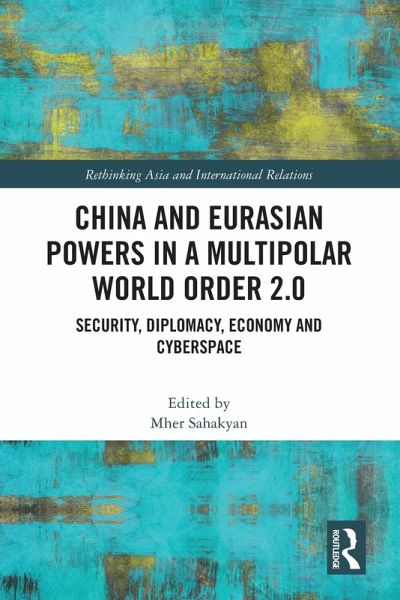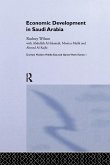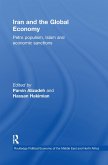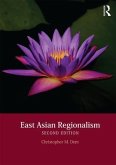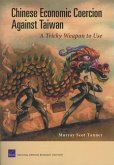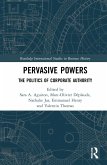China and Eurasian Powers in a Multipolar World Order 2.0
Security, Diplomacy, Economy and Cyberspace
Herausgeber: Sahakyan, Mher
China and Eurasian Powers in a Multipolar World Order 2.0
Security, Diplomacy, Economy and Cyberspace
Herausgeber: Sahakyan, Mher
- Broschiertes Buch
- Merkliste
- Auf die Merkliste
- Bewerten Bewerten
- Teilen
- Produkt teilen
- Produkterinnerung
- Produkterinnerung
This book considers Chinese, US, Russian, EU and other powers competition and collaboration in Eurasia, demonstrating that we are in a new Multipolar World Order 2.0 stage.
Andere Kunden interessierten sich auch für
![Economic Development in Saudi Arabia Economic Development in Saudi Arabia]() Ahmed Al RajhiEconomic Development in Saudi Arabia75,99 €
Ahmed Al RajhiEconomic Development in Saudi Arabia75,99 €![Iran and the Global Economy Iran and the Global Economy]() Iran and the Global Economy67,99 €
Iran and the Global Economy67,99 €![East Asian Regionalism East Asian Regionalism]() Christopher M. DentEast Asian Regionalism77,99 €
Christopher M. DentEast Asian Regionalism77,99 €![The Politics of Regional Trade in Iraq, Arabia, and the Gulf, 1745-1900 The Politics of Regional Trade in Iraq, Arabia, and the Gulf, 1745-1900]() Hala FattahThe Politics of Regional Trade in Iraq, Arabia, and the Gulf, 1745-190040,99 €
Hala FattahThe Politics of Regional Trade in Iraq, Arabia, and the Gulf, 1745-190040,99 €![Chinese Economic Coercion Against Taiwan Chinese Economic Coercion Against Taiwan]() Murray Scot TannerChinese Economic Coercion Against Taiwan27,99 €
Murray Scot TannerChinese Economic Coercion Against Taiwan27,99 €![Pervasive Powers Pervasive Powers]() Pervasive Powers67,99 €
Pervasive Powers67,99 €![Planet India Planet India]() Mira KamdarPlanet India20,99 €
Mira KamdarPlanet India20,99 €-
-
-
This book considers Chinese, US, Russian, EU and other powers competition and collaboration in Eurasia, demonstrating that we are in a new Multipolar World Order 2.0 stage.
Hinweis: Dieser Artikel kann nur an eine deutsche Lieferadresse ausgeliefert werden.
Hinweis: Dieser Artikel kann nur an eine deutsche Lieferadresse ausgeliefert werden.
Produktdetails
- Produktdetails
- Verlag: Taylor & Francis
- Seitenzahl: 246
- Erscheinungstermin: 7. Oktober 2024
- Englisch
- Abmessung: 234mm x 156mm x 15mm
- Gewicht: 390g
- ISBN-13: 9781032403366
- ISBN-10: 1032403365
- Artikelnr.: 71549334
- Herstellerkennzeichnung
- Libri GmbH
- Europaallee 1
- 36244 Bad Hersfeld
- gpsr@libri.de
- Verlag: Taylor & Francis
- Seitenzahl: 246
- Erscheinungstermin: 7. Oktober 2024
- Englisch
- Abmessung: 234mm x 156mm x 15mm
- Gewicht: 390g
- ISBN-13: 9781032403366
- ISBN-10: 1032403365
- Artikelnr.: 71549334
- Herstellerkennzeichnung
- Libri GmbH
- Europaallee 1
- 36244 Bad Hersfeld
- gpsr@libri.de
Mher Sahakyan is an 2022 AsiaGlobal Fellow of the Asia Global Institute of the University of Hong Kong. Mher holds a doctorate in international relations from China's Nanjing University. He is the founder and director of the China-Eurasia Council for Political and Strategic Research, a foundation in Armenia. Mher Sahakyan also founded the annual international conference, Eurasian Research on Modern China and Eurasia. He is an elected advisory board member of the International Institute for Peace, Austria, and the School of Liberal Arts & Humanities, Woxsen University, India. Mher is also a member of the British Association for Chinese Studies, the Asia Society of Hong Kong and the International Political Science Association. He is a lecturer at the Russian-Armenian University and Yerevan State University. He is the author of the book China's Belt and Road Initiative and Armenia, which was published in Armenian and in Russian and was shortlisted by the International Convention of Asia Scholars in Leiden, Netherlands, for its 2021 book prize. He is also author of The New Great Power Competition in Central Asia: Opportunities and Challenges for the Gulf, a contribution published in 2021 by the Anwar Gargash Diplomatic Academy in the United Arab Emirates. He is co-editor (with Heinz Gärtner) of China and Eurasia: Rethinking Cooperation and Contradictions in the Era of Changing World Order, published by Routledge in September 2021.
Contents List of Figures Notes on Contributors Preface in Chinese
Acknowledgements Foreword: Great Power conflict PART I China, Great Powers
and Eurasian Security 1. Political and economic security in multipolar
Eurasia: English school perspective 2. Eurasia and the Pacific as the
"Golden apple of discord" between the US and China: the cases of
Afghanistan, Ukraine, the AUKUS and Quad 3.The US and China as main powers
in the Multipolar world order 2.0: a case study Turkey and the Middle East
PART II:
Sino-Russian strategic partnership in Eurasia: politics, economy, trade and
interregional interaction 4.The strengthening of the Sino-Russian
partnership in the the era of the Multiplolar world order 2.0 5.
Russo-Chinese trade and economic cooperation: achievements and challenges
6. Interregional interaction between China and Russia on the Russo-Chinese
border in the context of the COVID-19 Pandemic PART III:
Shanghai Cooperation Organization, Belt and Road Initiative's China-Central
Asia-Western Asia and Bangladesh-China-India-Myanmar economic corridors 7.
China in Central Asia: the Shanghai Cooperation Organization, new
developments and roles in 2013-2021 8.China's Belt and Road Initiative and
South Caucasus in the Era of Ukrainian war and Multipolar world order 2.0
9. Bangladesh and Belt and Road Initiative: strategic rationale and
plausible repercussions PART IV: European subcontinent and China 10. China
and the European Union: more partners than rivals? 11. Chinese relations
with Central and Eastern European Countries in an era of Multipolar world
order 2.0 PART V: Cybersecurity challenges, Digital Silk Road, and
innovations in Eurasia 12. China's Digital Silk Road: empowering
capabilities for digital leadership in Eurasia 13. BRI's Digital Silk Road
and the EU: the role of innovation and communication in the Italian case
study 14. Cybersecurity challenges between the EU and China and the way
forward: thoughts and recommendations PART VI: The strategy of Communist
Party of China: the historical experience and roadmap for the future 15.
Comprehensive analysis of Resolution of the Central Committee of the
Communist Party of China on the Major Achievements and Historical
Experience of the Party over the Past Century PART VII Conclusion 16.
Conclusion: colliding interests in Ukraine, Eurasia, and cyberspace in the
era of Multipolar world order 2.0 Index
Acknowledgements Foreword: Great Power conflict PART I China, Great Powers
and Eurasian Security 1. Political and economic security in multipolar
Eurasia: English school perspective 2. Eurasia and the Pacific as the
"Golden apple of discord" between the US and China: the cases of
Afghanistan, Ukraine, the AUKUS and Quad 3.The US and China as main powers
in the Multipolar world order 2.0: a case study Turkey and the Middle East
PART II:
Sino-Russian strategic partnership in Eurasia: politics, economy, trade and
interregional interaction 4.The strengthening of the Sino-Russian
partnership in the the era of the Multiplolar world order 2.0 5.
Russo-Chinese trade and economic cooperation: achievements and challenges
6. Interregional interaction between China and Russia on the Russo-Chinese
border in the context of the COVID-19 Pandemic PART III:
Shanghai Cooperation Organization, Belt and Road Initiative's China-Central
Asia-Western Asia and Bangladesh-China-India-Myanmar economic corridors 7.
China in Central Asia: the Shanghai Cooperation Organization, new
developments and roles in 2013-2021 8.China's Belt and Road Initiative and
South Caucasus in the Era of Ukrainian war and Multipolar world order 2.0
9. Bangladesh and Belt and Road Initiative: strategic rationale and
plausible repercussions PART IV: European subcontinent and China 10. China
and the European Union: more partners than rivals? 11. Chinese relations
with Central and Eastern European Countries in an era of Multipolar world
order 2.0 PART V: Cybersecurity challenges, Digital Silk Road, and
innovations in Eurasia 12. China's Digital Silk Road: empowering
capabilities for digital leadership in Eurasia 13. BRI's Digital Silk Road
and the EU: the role of innovation and communication in the Italian case
study 14. Cybersecurity challenges between the EU and China and the way
forward: thoughts and recommendations PART VI: The strategy of Communist
Party of China: the historical experience and roadmap for the future 15.
Comprehensive analysis of Resolution of the Central Committee of the
Communist Party of China on the Major Achievements and Historical
Experience of the Party over the Past Century PART VII Conclusion 16.
Conclusion: colliding interests in Ukraine, Eurasia, and cyberspace in the
era of Multipolar world order 2.0 Index
Contents List of Figures Notes on Contributors Preface in Chinese
Acknowledgements Foreword: Great Power conflict PART I China, Great Powers
and Eurasian Security 1. Political and economic security in multipolar
Eurasia: English school perspective 2. Eurasia and the Pacific as the
"Golden apple of discord" between the US and China: the cases of
Afghanistan, Ukraine, the AUKUS and Quad 3.The US and China as main powers
in the Multipolar world order 2.0: a case study Turkey and the Middle East
PART II:
Sino-Russian strategic partnership in Eurasia: politics, economy, trade and
interregional interaction 4.The strengthening of the Sino-Russian
partnership in the the era of the Multiplolar world order 2.0 5.
Russo-Chinese trade and economic cooperation: achievements and challenges
6. Interregional interaction between China and Russia on the Russo-Chinese
border in the context of the COVID-19 Pandemic PART III:
Shanghai Cooperation Organization, Belt and Road Initiative's China-Central
Asia-Western Asia and Bangladesh-China-India-Myanmar economic corridors 7.
China in Central Asia: the Shanghai Cooperation Organization, new
developments and roles in 2013-2021 8.China's Belt and Road Initiative and
South Caucasus in the Era of Ukrainian war and Multipolar world order 2.0
9. Bangladesh and Belt and Road Initiative: strategic rationale and
plausible repercussions PART IV: European subcontinent and China 10. China
and the European Union: more partners than rivals? 11. Chinese relations
with Central and Eastern European Countries in an era of Multipolar world
order 2.0 PART V: Cybersecurity challenges, Digital Silk Road, and
innovations in Eurasia 12. China's Digital Silk Road: empowering
capabilities for digital leadership in Eurasia 13. BRI's Digital Silk Road
and the EU: the role of innovation and communication in the Italian case
study 14. Cybersecurity challenges between the EU and China and the way
forward: thoughts and recommendations PART VI: The strategy of Communist
Party of China: the historical experience and roadmap for the future 15.
Comprehensive analysis of Resolution of the Central Committee of the
Communist Party of China on the Major Achievements and Historical
Experience of the Party over the Past Century PART VII Conclusion 16.
Conclusion: colliding interests in Ukraine, Eurasia, and cyberspace in the
era of Multipolar world order 2.0 Index
Acknowledgements Foreword: Great Power conflict PART I China, Great Powers
and Eurasian Security 1. Political and economic security in multipolar
Eurasia: English school perspective 2. Eurasia and the Pacific as the
"Golden apple of discord" between the US and China: the cases of
Afghanistan, Ukraine, the AUKUS and Quad 3.The US and China as main powers
in the Multipolar world order 2.0: a case study Turkey and the Middle East
PART II:
Sino-Russian strategic partnership in Eurasia: politics, economy, trade and
interregional interaction 4.The strengthening of the Sino-Russian
partnership in the the era of the Multiplolar world order 2.0 5.
Russo-Chinese trade and economic cooperation: achievements and challenges
6. Interregional interaction between China and Russia on the Russo-Chinese
border in the context of the COVID-19 Pandemic PART III:
Shanghai Cooperation Organization, Belt and Road Initiative's China-Central
Asia-Western Asia and Bangladesh-China-India-Myanmar economic corridors 7.
China in Central Asia: the Shanghai Cooperation Organization, new
developments and roles in 2013-2021 8.China's Belt and Road Initiative and
South Caucasus in the Era of Ukrainian war and Multipolar world order 2.0
9. Bangladesh and Belt and Road Initiative: strategic rationale and
plausible repercussions PART IV: European subcontinent and China 10. China
and the European Union: more partners than rivals? 11. Chinese relations
with Central and Eastern European Countries in an era of Multipolar world
order 2.0 PART V: Cybersecurity challenges, Digital Silk Road, and
innovations in Eurasia 12. China's Digital Silk Road: empowering
capabilities for digital leadership in Eurasia 13. BRI's Digital Silk Road
and the EU: the role of innovation and communication in the Italian case
study 14. Cybersecurity challenges between the EU and China and the way
forward: thoughts and recommendations PART VI: The strategy of Communist
Party of China: the historical experience and roadmap for the future 15.
Comprehensive analysis of Resolution of the Central Committee of the
Communist Party of China on the Major Achievements and Historical
Experience of the Party over the Past Century PART VII Conclusion 16.
Conclusion: colliding interests in Ukraine, Eurasia, and cyberspace in the
era of Multipolar world order 2.0 Index

